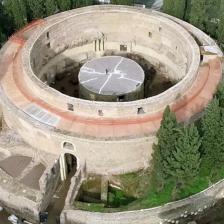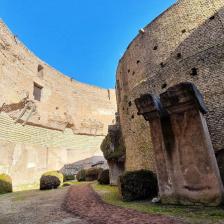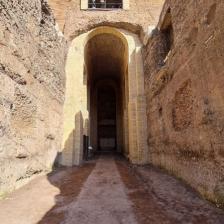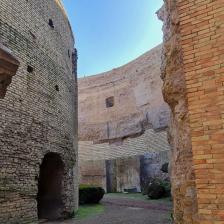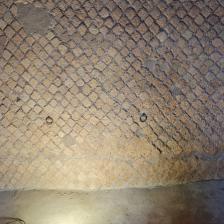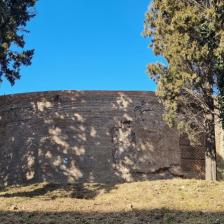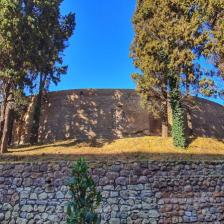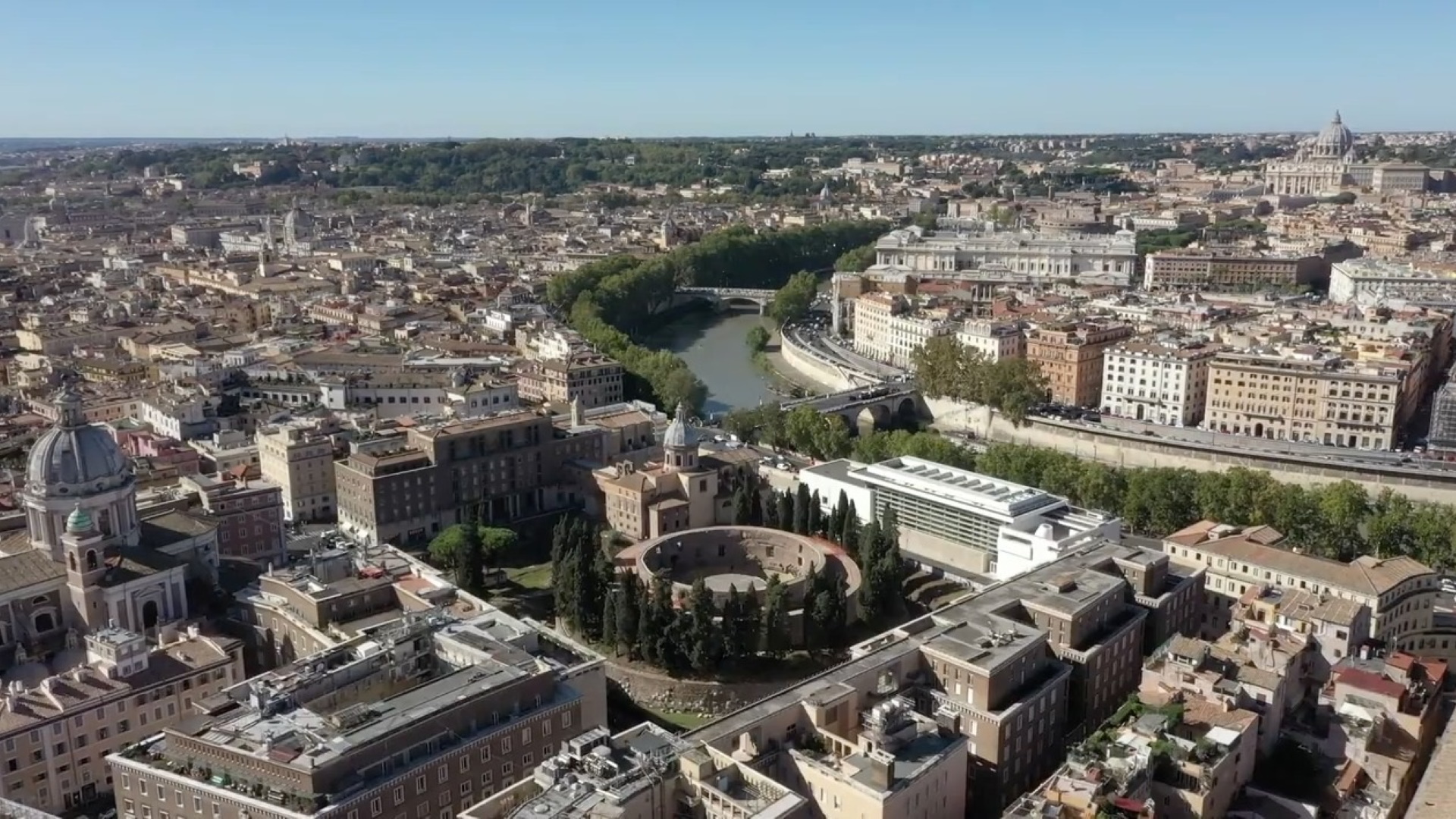
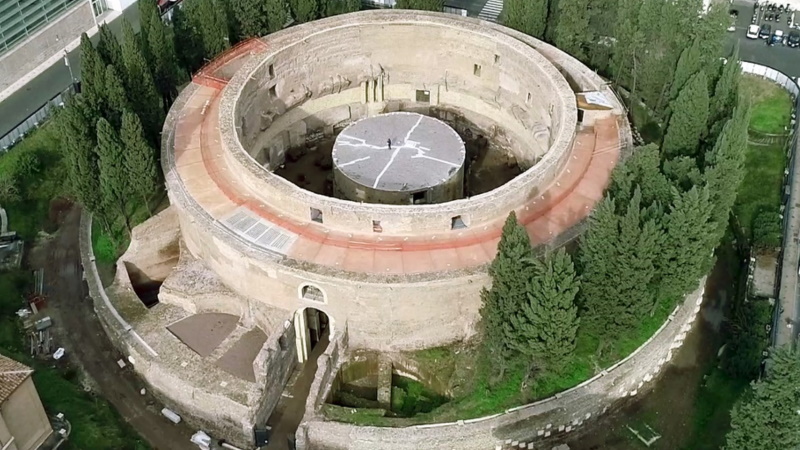
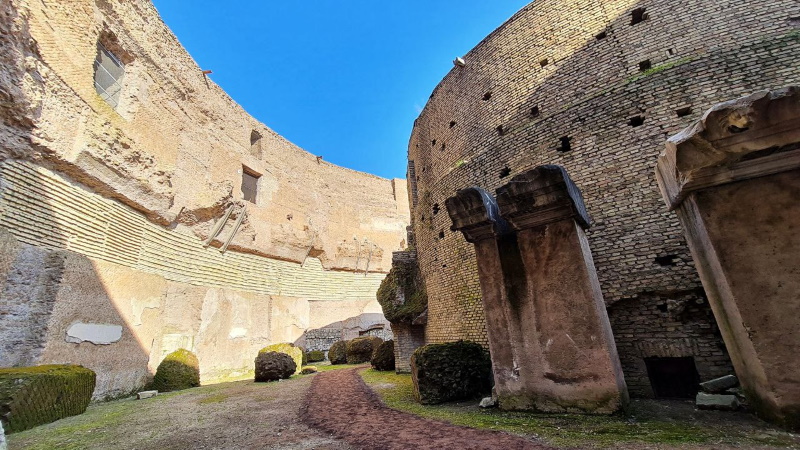
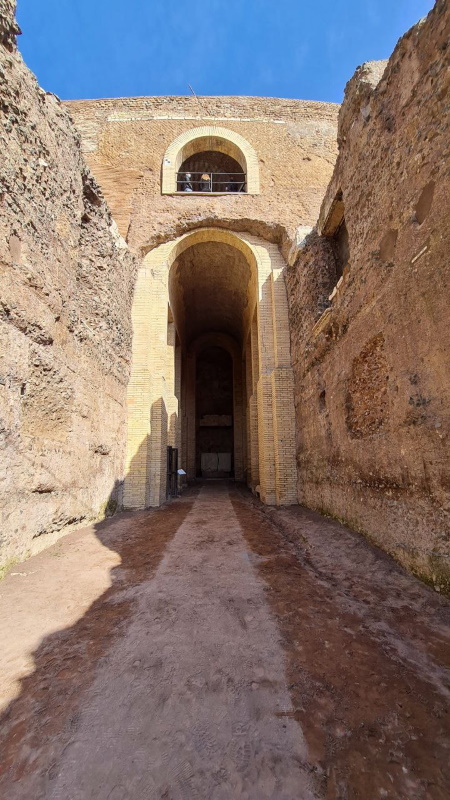
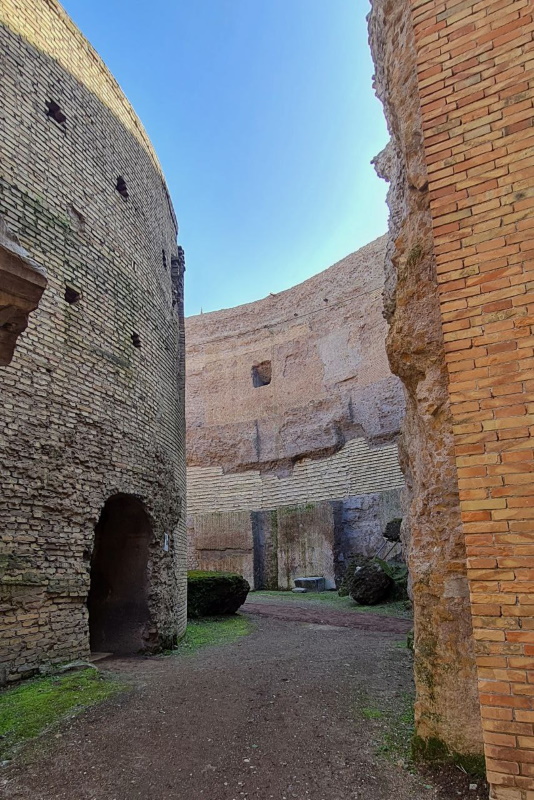
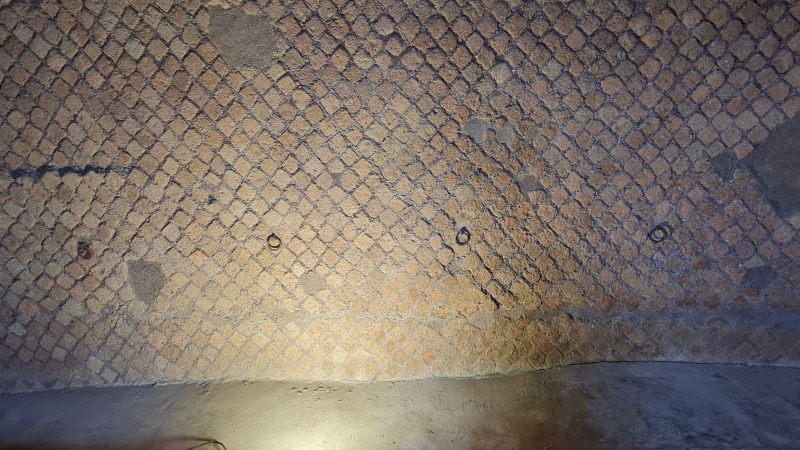
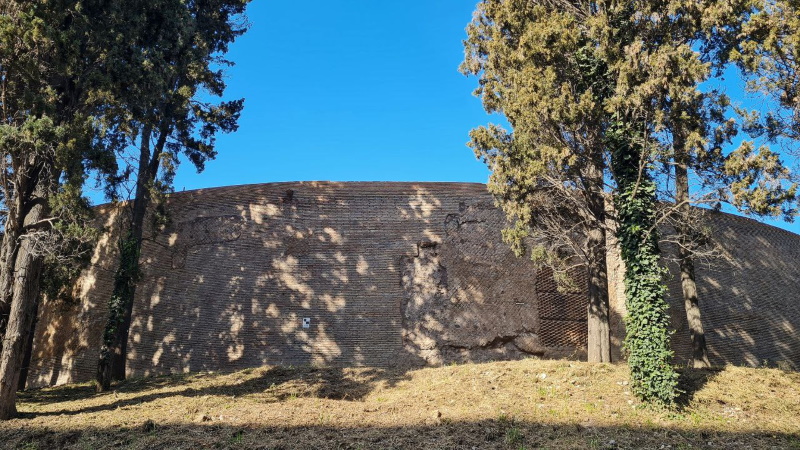
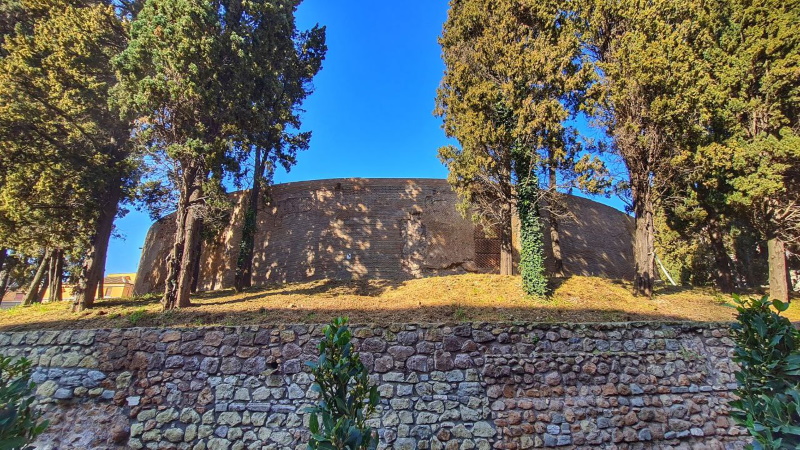
In 28 BC, returning from the military campaign in Egypt, which ended with the victory of Actium in 31 BC. and the subjugation of Cleopatra and Marc Antony, Octavian Augustus began the construction of his mausoleum in the northern area of the Campus Martius, not yet urbanized at the time.
The Greek historian Strabo described it as follows: "a large mound near the river on a high base of white stone, covered up to the top with evergreen trees; on the top is the bronze simulacrum of Augustus and below the mound are his burial and those of his relatives; behind there is a large wood for wonderful walks.". The Mausoleum has a diameter of 300 Roman feet (about 87 meters) and is the largest circular tomb ever known. It consisted of a cylindrical body covered in travertine blocks, at the center of which a door opened to the south preceded by a short staircase; near the entrance, perhaps on pillars, were placed the bronze tables engraved with the Res Gestae, or the emperor's autobiography, the text of which is transcribed on the wall of the nearby Ara Pacis Museum.
Various hypotheses for the reconstruction of the monument have been proposed based on the preserved remains and drawings made in the 16th century by Baldassarre Peruzzi. A second architectural order set on one of the innermost annular walls stood on a base about 12 meters high. It was crowned by a Doric entablature, of which various elements were found in the area. Thirty meters above stood Augustus' gilded bronze statue. Probably, it was the original of the marble statue found in the Villa di Livia in Prima Porta. In front of the memorial, there were two granite obelisks. One was reused in Piazza dell'Esquilino, behind the Basilica of Santa Maria Maggiore (1587), the other in the Dioscuri fountain in Piazza del Quirinale (1783).
A deep access corridor, the dromos, led to the circular sepulchral cell. It housed three rectangular niches where the urns housing the ashes of Octavia, sister of the emperor, and her son Marcellus, who died prematurely in 23 BC. Augustus was perhaps buried in the room obtained inside the central cylindrical core. Inside the tomb were the ashes of the members of the imperial family: general Marco Agrippa, second husband of Giulia, daughter of Augustus, Drusus Major, the two children Lucio and Gaius Cesare, children of Giulia, Drusus Minor, Germanicus, Livia, second wife of Augustus, Tiberius, Agrippina, Caligula, Britannicus, Claudius, and Poppea, Nero's wife; the latter was instead excluded from the Mausoleum for unworthiness, like Giulia, the daughter of Augustus. For a short time, the Mausoleum housed the ashes of Vespasian and of Nerva. It reopened, after a century, to host the ashes of Giulia Domna, wife of Emperor Septimius Severus.
After being abandoned and looted in medieval times, the mausoleum underwent numerous transformations and was used as a fortress, a garden, an amphitheater, and, in the early 20th century, as a concert hall. Between 1936-1938, after the demolition of the surrounding neighborhood and the construction of Piazza Augusto Imperatore, the monument was restored to its original appearance. For the next 70 years, however, the mausoleum was left in a state of progressive neglect. Restoration work on the Mausoleum began in 2016 following preliminary archaeological investigations that uncovered important evidence of the Roman era, such as 1st-century travertine block paving. The first phase of work, completed in 2019, saw the start of the museum layout, which allowed the mausoleum to be temporarily reopened to the public in 2021. The second part of the work, which began in 2025 under the technical direction of the Capitoline Superintendency of Cultural Heritage with the contribution of the TIM Foundation, involves landscaping, the completion of lighting and accessibility systems, the restoration of the burial chamber and the complete setting up of the museum itinerary inside and outside the Mausoleum. The work is expected to be completed by the end of 2026. The museum layout will be designed by Dutch architect Rem Koolhas and financed by the Bvlgari Group.
Ara Pacis Museum
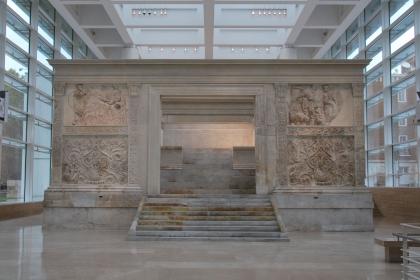
 Condividi
Condividi
The river Tiber
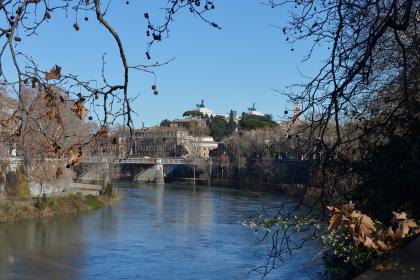
According to legend, the history of Rome begins right here
Rione IV - Campo Marzio
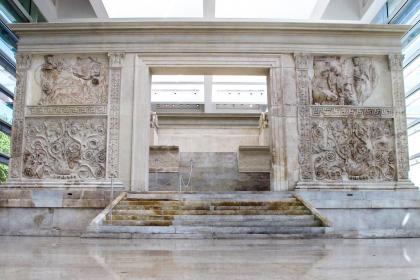
Information
From 6 June 2022 the Mausoleum CLOSES temporarily to allow for the advancement of the renovation work in Piazza Augusto Imperatore.
 Condividi
Condividi
Location
To find out about all accessibility services, visit the Rome accessible section.












































